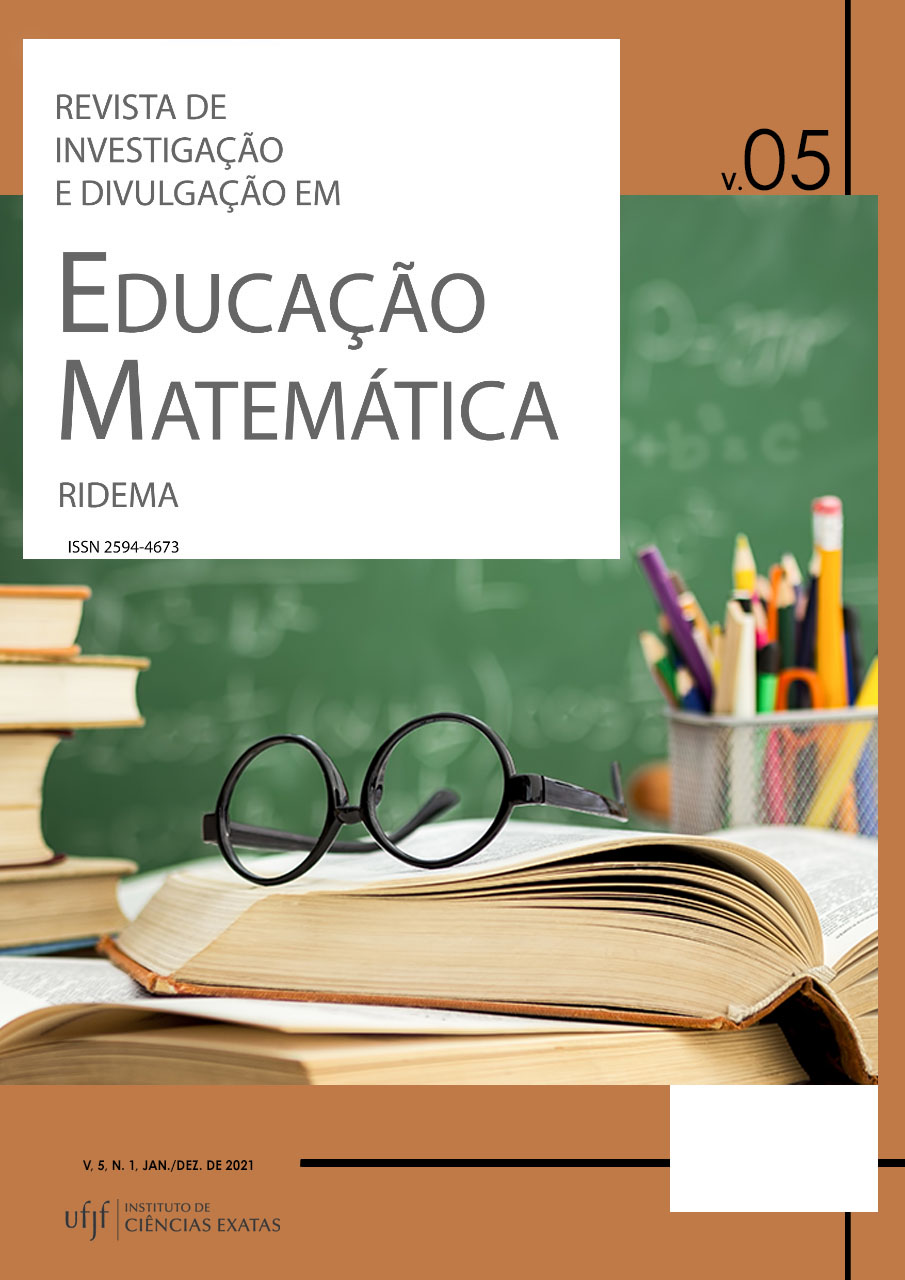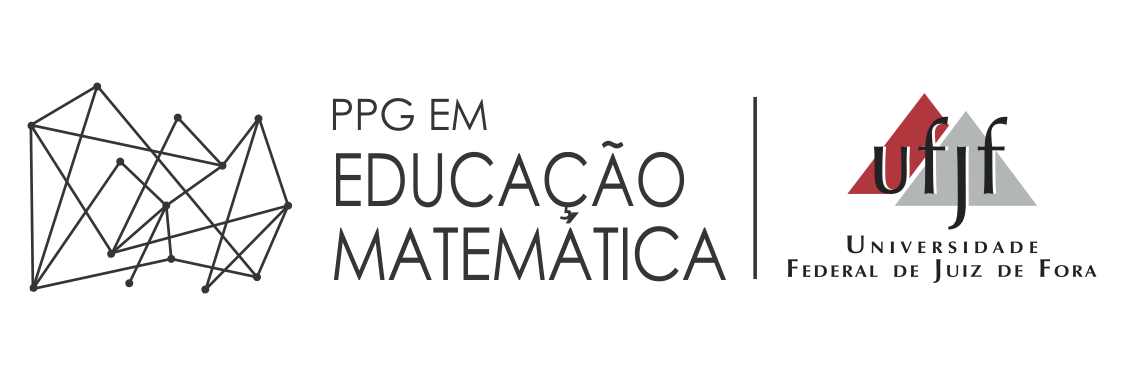Measurement of the attitude towards statistics of future Early Childhood Education teachers
DOI:
https://doi.org/10.34019/2594-4673.2021.v5.35341Keywords:
Statistics, Attitude, Preservice teachers, Early Childhood EducationAbstract
The purpose of this study is to measure the attitude on statistics of a group of preservice Early Childhood Education teachers of an university in the central region of Chile. To achieve this objective, a quantitative and descriptive research study was carried out by applying the Attitudes on Statistics Scale (Estrada, 2002). The sample included 38 preservice Early Childhood Education teachers. Results indicated high scores stands on the statements: Statistics are useless (4.95) and Statistics only serve people in science ”(4.76), and a low score for statements: I often explain to my colleagues statistical problems that they have not understood (2) and Through statistics you can manipulate reality (2,32). The need to generate training sessions in which future teachers improve their attitude towards statistics, specifically what is related to the behavioral and instructional components, is concluded.
Downloads
Metrics
References
ALSINA, Á. Contextos y propuestas para la enseñanza de la estadística y la probabilidad en Educación Infantil: un itinerario didáctico. Épsilon. Revista de Educación Matemática, v. 34, n. 95, p. 25-48, 2017. https://thales.cica.es/epsilon/sites/thales.cica.es.epsilon/files/epsilon95_2.pdf
ALSINA, Á. Diseño, gestión y evaluación de actividades matemáticas competenciales en el aula. Épsilon. Revista de Educación Matemática, v. 33, n. 92, p. 7-29, 2016. https://core.ac.uk/download/pdf/334428177.pdf
ALSINA, Á. Itinerarios didácticos para la enseñanza de las matemáticas (6-12 años). Barcelona: Graó, 2019.
ALSINA, Á. La estadística y la probabilidad en educación infantil: conocimientos disciplinares, didácticos y experienciales. Didácticas Específicas, n. 7, p. 4-22, 2012. https://revistas.uam.es/didacticasespecificas/article/view/7700
AUZMENDI, E. Las actitudes hacia la matemática estadística en las enseñanzas medias y universitarias. Bilbao: Mensajero, 1992.
BATANERO, C., BURRILL, G.; READING, C. Teaching statistics in school mathematics: challenges for teaching and teacher education. A Joint ICMI/IASE Study. New York: Springer, 2011.
BATANERO, C.; DÍAZ, C. Training teachers to teach probability: Reflections and challenges. Chilean Journal of Statistics, v. 3, n. 1, p. 3-13, 2012. https://www.soche.cl/chjs/volumes/03/01/Batanero_Diaz(2012).pdf
BATANERO, C.; DÍAZ, C.; CONTRERAS, J. M.; ROA, R. El sentido estadístico y su desarrollo. Números. Revista de didáctica de las Matemáticas, n. 83, p. 7-18, 2013. http://www.sinewton.org/numeros/numeros/83/Monografico_01.pdf
BEN-ZVI, D.; MAKAR, K. International Perspectives on the Teaching and Learning of Statistics. En:BEN-ZVI, D.; MAKAR, K. (Ed.), The Teaching and Learning of Statistics. Suiza: Springer, 2016. p. 1-19.
CASAS-ROSAL, J. C.; VILLARRAGA-RICO, M. E.; MAZ-MACHADO, A.; CASTRO-CARVAJAL, D.; LEÓN-MANTERO, C. Profesores en formación de la Universidad del Tolima: un análisis de sus actitudes hacia la estadística. Matemáticas, Educación y Sociedad, v. 2, n. 3, p. 9-19, 2019. https://www.uco.es/ucopress/ojs/index.php/mes/article/view/12845
CLEMENTS, D. H.; SARAMA, J.; SPITLER, M. E.; LANGE, A. A.; WOLFE, C. B. Mathematics learned by young children in an intervention based on learning trajectories: A large-scale cluster randomized trial. Journal for Research in Mathematics Education, v. 42, n. 2, p. 127-166, 2011. https://doi.org/10.5951/jresematheduc.42.2.0127
ESTRADA, A. Análisis de las actitudes y conocimientos estadísticos elementales en la formación del profesorado. Barcelona: Universitat Autònoma de Barcelona, 2002.
ESTRADA, A. Las actitudes hacia la estadística en la formación de los profesores. Lleida: Milenio, 2009.
ESTRADA, A.; BATANERO, C.; FORTUNY, J. M. Un estudio comparado de las actitudes hacia la estadística en profesores en formación y en ejercicio. Enseñanza de las Ciencias: Revista de Investigación y Experiencias Didácticas, v. 22, n. 2, pp. 263-267, 2004. https://raco.cat/index.php/Ensenanza/article/view/21977
ESTRADA, A.; BAZÁN, J.; APARICIO, A. Un estudio comparativo de las actitudes hacia la estadística en profesores españoles y peruanos. UNIÓN. Revista Iberoamericana de Educación Matemática, n. 24, p. 45¬-56, 2012. https://core.ac.uk/download/pdf/328833626.pdf
FLORES, M. Implicaciones de los paradigmas de investigación en la práctica educativa. Revista Digital Universitaria, v. 5, n. 1, p. 1-9, 2004. https://www.revista.unam.mx/vol.5/num1/art1/ene_art1.pdf
FORTUNY, J. M.; RODRÍGUEZ, R. Aprender a mirar con sentido: facilitar la interpretación de las interacciones en el aula. Avances de Investigación en Educación Matemática, n. 1, p. 23-37, 2012. https://doi.org/10.35763/aiem.v1i1.3
GAL, I.; GINSBURG, L.; SCHAU, C. Monitoring attitudes and beliefes in statistics education. In: GAL, I.; GARFIEL, J. B. (Eds.), The Assessment Challenge in Statistics Education. Netherlands: IOS Press, 1997, p. 37-51.
GATTUSO, L.; PANNONE, M. Teacher’s training in a statistics teaching experimente. In: B. PHILLIPS (Ed.), Proceedings of the Sixth International Conference on Teaching of Statistics. Ciudad del Cabo: IASE, 2002, p. 1-6.
GONZÁLEZ, A. Los paradigmas de investigación en las ciencias sociales. Islas, v. 45, n. 138, p. 125-135, 2003. http://islas.uclv.edu.cu/index.php/islas/article/view/572
JACOBS, V.; LAMB, L.; PHILIPP, R. Professional noticing of children’s mathematical thinking. Journal for Research in Mathematics Education, v. 41, n. 2, pp. 169-202, 2010. https://www.jstor.org/stable/20720130
LEÓN-MANTERO, C.; PEDROSA-JESÚS, C.; MAZ-MACHADO, A.; CASAS-ROSAL, J. C. Medición de las actitudes hacia las matemáticas en maestros de Educación infantil en formación. Espacios, v. 40, n. 23, p. 14, 2019. http://www.revistaespacios.com/a19v40n23/19402314.html
LLINARES, S.; VALLS, J. Prospective primary mathematics teachers’ learning from on-line discussions in a virtual video-based environment. Journal of Mathematics Teacher Education, v. 13, n. 2, p. 177-196, 2010. https://doi.org/10.1007/s10857-009-9133-0
MARTINS, J. A.; ESTRADA, A; NASCIMENTO, M. ¿Gigantes o molinos? actitudes hacia la estadística de profesores portugueses de Educación Primaria. In: FESPM (Ed.), VIII Congreso Iberoamericano de Educación Matemática. Libro de Actas. Jaén: FESPM, 2017, p. 132-140.
MARTINS, J. A.; NASCIMENTO, M.; ESTRADA, A. Attitudes of teachers towards statistics: A preliminary study with Portuguese teachers. In: PYTLAK, M.; ROWLAND, T.; SWOBODA, E. (Eds.), Proceedings of Seventh Congress of the European Society for Research in Mathematics Education (CERME 7). Rzeszow: University of Rzeszow y ESRM, 2011.
MASON, J. Researching your own practice: The discipline of noticing. London: Routledge. Falmer, 2002.
MINEDUC. Bases curriculares educación parvularia. Santiago: Subsecretaría de Educación Parvularia, 2018.
MINEDUC. Estándares orientadores para carreras de Educación Parvularia. Santiago: Centro de Investigación Avanzada en Educación, 2012.
NCTM. Principles and standards for school mathematics. Reston, VA: National Council of Teachers of Mathematics, 2000.
NISS, M. Mathematical competencies and the learning of mathematics: The Danish KOM Project. In: GAGATSIS A.; PAPASTAVRIDES, S. (Eds.), 3rd Mediterranean Conference on Mathematical Education. Athens: Hellenic Mathematical Society, 2003, p. 115-124.
OCDE. Marco de Evaluación y de Análisis de PISA para el Desarrollo: Lectura, matemáticas y ciencias. Versión preliminar. Paris: OECD Publishing, 2017.
OCDE. PISA. Marco de la evaluación. Conocimientos y habilidades en Ciencias, Matemáticas y Lectura. Madrid: Santillana, 2006.
ROBERTS, D. M.; BILDERBACK, E. W. Reliability and validity of statistics attitude survey. Educational and Psychological Measurement, v. 40, p. 235-238, 1980. https://doi.org/10.1177/001316448004000138
SHERIN, M. G.; JACOBS, V. R.; PHILLIP, R. A. Situating the study of teacher noticing. In: SHERIN, M. G.; JACOBS, V. R.; PHILLIP, R. A. (Eds.), Mathematics teacher noticing: Seeing through teachers’eyes. New York, NY: Routledge, 2011, p. 3-13.
VAN ES, E.; SHERIN, M. G. Learning to notice: Scaffolding new teachers’ interpretations of classroom interactions. Journal of Technology and Teacher Education, v. 10, n. 4, p. 571-596, 2002. https://www.learntechlib.org/primary/p/9171/
VÁSQUEZ, C.; ALVARADO, H.; RUZ, F. Actitudes de futuras maestras de educación infantil hacia la estadística, la probabilidad y su enseñanza. Educación Matemática, v. 31. n. 3, p. 177-202, 2019. https://doi.org/10.24844/em3103.07
VÁSQUEZ, C.; DÍAZ-LEVICOY, D.; CORONATA, C.; ALSINA, Á. Alfabetización estadística y probabilística: primeros pasos para su desarrollo desde la Educación Infantil. Cadernos Cenpec, v. 8, n. 1, p. 154-179, 2018. http://dx.doi.org/10.18676/cadernoscenpec.v8i1.393
WISE, S. The development and validation of a scale measuring attitudes toward statistics. Educational and Psychological Measurement, v. 45, p. 401-405, 1985. https://doi.org/10.1177/001316448504500226



























